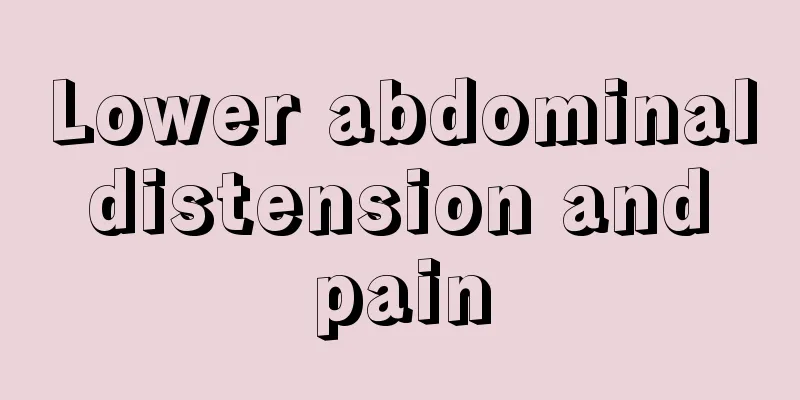Lower abdominal distension and pain

|
The lower abdomen is located in the belly. This includes the human uterus and ovaries, which are key parts of the female body that control female health. The pain in the lower abdomen may indicate an abnormality in the uterus. First, rule out pregnancy and the possibility of ectopic pregnancy. In addition, developmental abnormalities of the uterus, such as endometriosis, and other organ abnormalities can lead to poor metabolism and may cause pain. Let’s find out. Endometriosis: Cells in the uterus grow outside the uterus where they don't belong, such as on the outside of the fallopian tubes, ovaries, or bladder. At the end of the period, these cells also bleed lightly, causing inflammation and damage to the areas they extend to. Our bodies automatically create scar tissue to surround these cells and stop this destructive effect. The production of scar tissue can cause lower abdominal pain and reduce our fertility. At first, the patient feels the usual premenstrual abdominal distension, followed by a similar feeling of lower abdominal pain as before menstruation, but not before menstruation. Interstitial cystitis: Your urinary tract is inflamed, causing your bladder to swell. Doctors generally believe that women with this disease may have lesions in the bladder wall, which stimulates the central nervous system in the brain to produce a urination response. Pain near the pubic bone, which worsens when trying to urinate; frequent urination (at least once an hour during the day and multiple times at night), and sharp pain during intercourse. Ovarian cyst: An ovarian cyst is a lump or mass filled with fluid inside the uterus. Less than 5% of people with ovarian cysts will develop cancer. All ovarian cysts are functional cysts, which means that the developing eggs may be surrounded by cystic fluid, causing ovarian enlargement and lower abdominal pain. Ovarian cysts can grow over time to the point where they become painful when you exercise or stand up after sitting still. At this time, the condition was already quite serious. Because the accumulated fluid in the cyst causes the ovary to sag due to gravity, you will feel a bloating and pain in your lower abdomen when you exercise. Gynecologists can understand the condition by palpating the lower abdomen and determine whether there is an ovarian cyst. If an ultrasound examination reveals an ovarian cyst and it appears to be cancerous or is too large, your doctor will recommend surgery to remove it. |
<<: Symptoms of difficulty conceiving
>>: What causes back pain during pregnancy?
Recommend
Can I dye my hair during my period?
In daily life, many women may have the habit of d...
How long after pregnancy can an ectopic pregnancy be discovered?
Experts say that how long it takes to detect an e...
[Protecting teeth and keeping healthy is a strong youth, a healthy China is a prosperous nation. Series of popular science on oral health 1] Oral health management throughout the life cycle
The results of the fourth national oral health ep...
Can people with blocked fallopian tubes have IVF?
The fallopian tube is a very important organ in t...
What are the symptoms of cold body in girls?
Cold body has a great impact on women's healt...
Causes of leg pain below the knee
If a person has pain below the knee, it is a very...
How to make pork elbows not greasy? Authentic pork elbow recipe
The pork elbow is very rich in lean meat and has ...
What to do if you catch a cold during early pregnancy?
During pregnancy, we need to pay great attention ...
How to produce milk fastest after caesarean section
Nowadays, everyone advocates breastfeeding. Breas...
Can I have sex 42 days after a caesarean section?
It is best not to have sex at this time, just aft...
What are the symptoms of anemia during menstruation?
Anemia is one of the diseases that poses the grea...
What to do if you have constipation after a normal delivery
During a normal birth, episiotomy is mainly perfo...
It’s cold, is it good to wear socks to sleep?
As the weather gets colder, our friends in the so...









